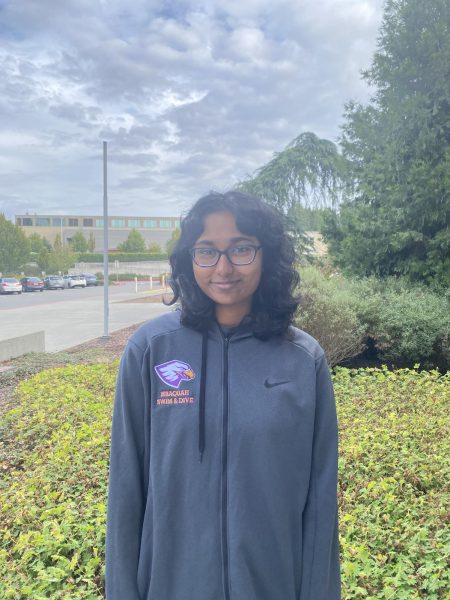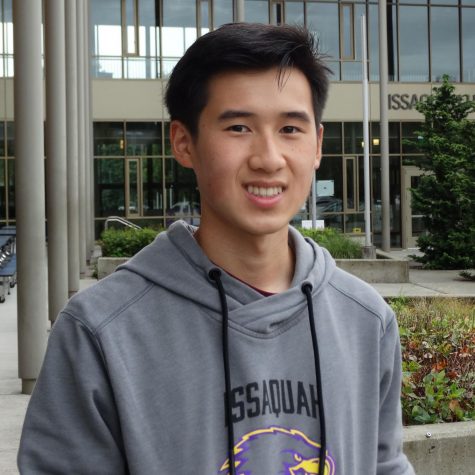What’s New in IHS Course Selection
April 22, 2022
For some, there is a hushed joy when March rolls around and it is time to choose courses for the next school year. Others hear the obnoxious mechanical clicking of an almost-set time stressor – however, both sides acknowledge that course selection is a critical time.
Course selection is a process in which students meticulously pick out their classes for the next year, slowly carving out their academic path for secondary school. Although it seems relatively simple, there is a lot of variety within schedules, even amongst core classes.
For core subjects such as math and science, there is quite a bit of wiggle room; there are multiple courses to choose from, with various selections that do not follow the “traditional” pathway. For science, courses such as “Sustainable Design and Technology,” “Astronomy,” and “Marine Biology” are just some of the options that students can choose from. Sophomore Riddhi Sharma states, “I usually take a lot of science courses. You can learn things that you cannot anywhere else, and the things you learn are not common knowledge.”
Of course, other subjects have less variety, such as language arts, in which students can choose between an on-level or advanced course. Seniors have options to substitute more traditional English courses with English electives, such as Public Speaking or Film as Lit; however, these options are typically only open to seniors, with a couple courses counting as English credit for juniors. The school also tries to expand courses for students, next year adding in a variety of new classes including: Sustainable Design and Technology, India & South Asia: From Area Studies to Ethnic Studies, AP Mandarin Chinese, and Music Theory. Junior Pavan Vemparala adds, “I think the Unity Game Design course is new this year, and there is also the Applications of Computer Science course, so I do think there is an expansion in [computer science courses].”
Upcoming “India & South Asia: From Area Studies to Ethnic Studies” teacher Rachel Heilman explains her process on bringing the course to IHS: “I have been trying to teach this course for twenty years, but also I am in the right time frame right now to do so.” She states, “I cannot overstate how lucky I feel to be at this school with this administration. The previous principal Ms. McCormick, and current principal Ms. Connolly, were both supportive of [the course proposal], which is key. If your principal is willing to put it on the course schedule, that makes a huge difference.” With the open-mindedness that administration shows, it is not implausible that more courses relating to student interests will be popping up over the next couple years.
However, until those courses are implemented, there are still courses that are not offered at IHS. Senior Kate Moen touches on this, stating, “Adding another math class would be helpful, because I have friends who have taken AP Calc BC and they have to go into AP Stats, which is an ‘easier class’, and that looks strange.” Although there is not a higher math level offered at IHS, students can enroll in courses throughout a series of community colleges in Washington through the Running Start program. The Bellevue College course catalog alone contains 20-plus pages of classes students can choose from. Sophomore Aisha Lamba expresses her interest in enrolling full time through the Running Start program, stating, “I like the idea of having much more free time than being in school for seven hours, and having a more open schedule.” Students choosing to partake in running start as a full time student will enroll to roughly three classes per quarter, and receive high school credits equivalent to the college credits currently being earned.
For students considering Running Start, it is advised to evaluate future colleges and their credit transfer policy. The Running Start FAQ document posted on the counseling website explains, “College credits earned through Running Start are not guaranteed to apply to EVERY four-year college. Transfer of credits depends on the college you choose to attend.” The document goes on, explaining how in-state colleges have “transfer credit guidelines established and posted for you to review.”
When selecting courses for the next school year, it is important to keep in mind the rigor of each class. AP classes, and those taken via Running Start are college level classes, are accompanied by the rigor and workload of one. Freshman Aleks Wojewoda explores the concept of AP classes, stating, “People can get into college level courses at a high school age, and that gives them a good opportunity.” By gradually exposing themselves to college classes and workload, students can prepare themselves for the immense responsibilities that come after the completion of secondary education, whether that be working a job or going to another educational institution. Moen advises students, “The amount of AP classes someone can take depends on the person.” One’s own capabilities are the most important thing to consider when selecting advanced courses, as each person has their own academic strengths and weaknesses.
While there are a variety of factors to consider while selecting courses for the next school year, students truly have a multitude of options to make the most of their high school career, and prepare them for their next steps. For more information on course selection, be sure to visit the IHS counseling website.




